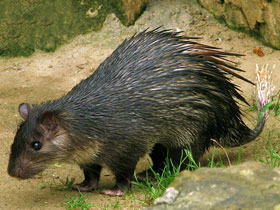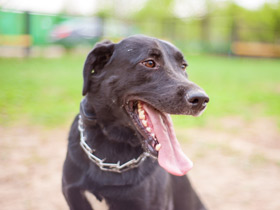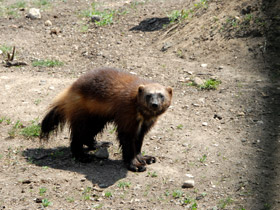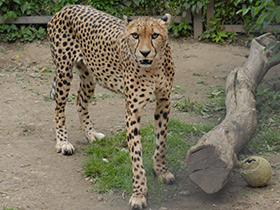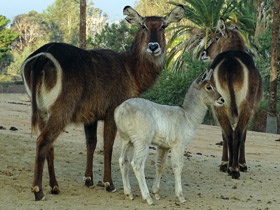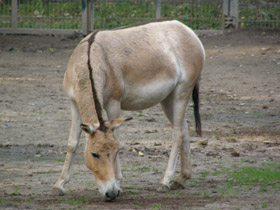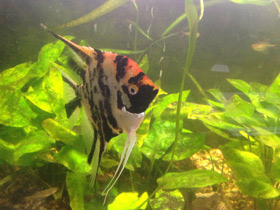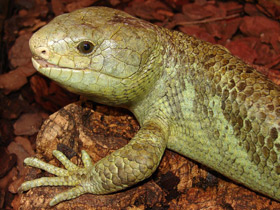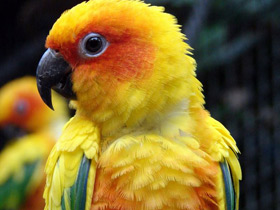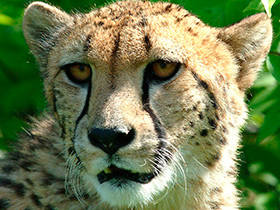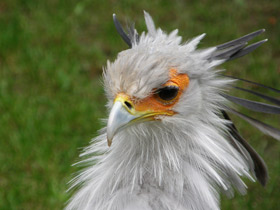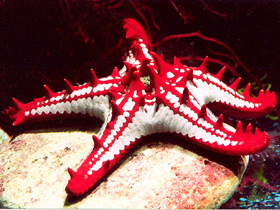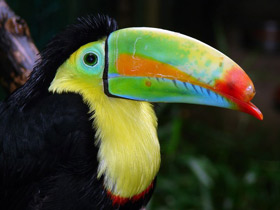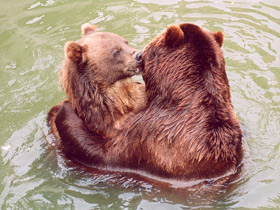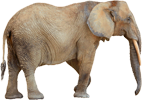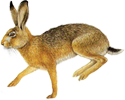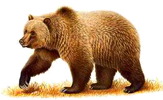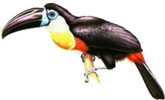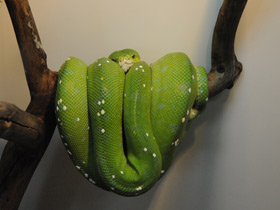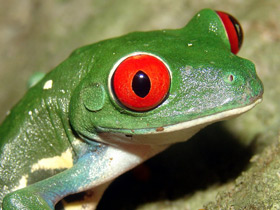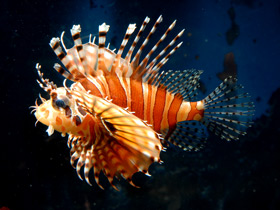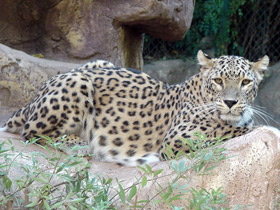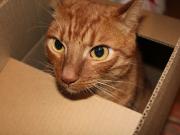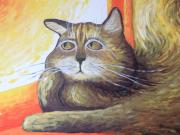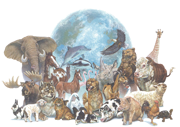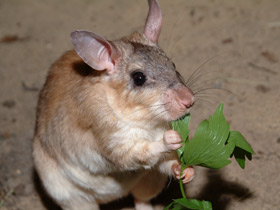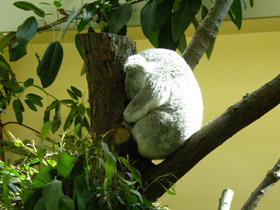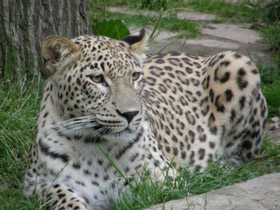The African brush-tailed porcupine (Atherurus africanus)
The African brush-tailed porcupine (Atherurus africanus) is a species of rat-like Old World porcupine, indigenous to a broad belt of Africa ranging from Guinea on the west coast to Kenya on the east. This is a common species with a very wide range, and despite it being used extensively for bushmeat, the International Union for Conservation of Nature has rated its conservation status as being of "least concern".
Habitat and distinctive features
Atherurus africanus is found in tropical rainforests, preferring to settle near rivers at altitudes up to 3,000 kilometres above sea level. With their elongated body, 35 to 60 cm long, ending in a long tail with a tassel at the end, these rodents somewhat resemble large rats, weighing about three kilograms. Their body length ranges from 37 to 60 cm and tail length from 10 to 26 cm. They have swimming webbing between their toes, and the toes themselves are armed with 5 sharp, strong claws. Colouration varies from black to dark brown on the back and white to light beige on the belly. Atherurus africanus has 20 teeth in its mouth, among them the incisors, which are very strong and covered with yellow enamel, stand out. The softest needles are on the head, neck and around the abdomen. The hard, flattened, stylite-shaped needles are located on the sides. In the centre of the back are movable flexible needles that can become puffed. Several long and hard needles grow on the back of the body and the hind legs. The tail ends in a fluffy, scaly tassel. Small eyes are located on the sides of the head. The ears are small and rounded. Females have two pairs of nipples.
Social behaviour
Atherurus africanus leads a nocturnal lifestyle. Porcupines use small caves, rock crevices, and trunks of fallen trees as shelter. They are not afraid of cramped quarters, so each burrow can house eight close relatives side by side. With families living nearby, African porcupines try to maintain good neighbourly relations and even share food. Their five-toed paws are equipped with webbing and sharp claws, so despite their terrestrial lifestyle, Atherurus africanus are excellent swimmers and climb trees. They go in search of food alone. Their diet consists almost entirely of leaves, roots and tubers of various plants, bulbs, tree bark, cones and fruits. Sometimes Atherurus africanus eats carrion, bones of birds and mammals to replenish their organism with microelements. This phenomenon is common in regions where the usual food is low in phosphorus and calcium. It is not uncommon for porcupines to visit farmers' plantations and eat crops, so they have a reputation for being vicious pests of farmland. Africans set traps on them. Wild-caught porcupines are considered a delicacy and are eaten.
How Atherurus africanus defends itself
Atherurus africanus defends itself from its natural enemies - predators, snakes and owls - in a well-tested way. To frighten the offender, they straighten their needles and start loudly tapping their tail tassel and stomping their feet, creating a cacophony of sounds that unnerves and scares away predators.
Lifestyle and behaviour
Atherurus africanus form monogamous family groups consisting of parents and their offspring of different ages. Usually the family settles in burrows abandoned by other animals (most often trumpet dens), in which they create up to 6 separate exits. Atherurus africanus are engaged in independent digging of shelter only in exceptional cases. Boundaries of the home range are marked with odour markers by representatives of both sexes, but males devote much more time to this process than females. From 8 to 25 animals can coexist on one square kilometre. The size of the home range depends on the forage base and time of year. In summer it does not exceed 67 hectares, and in winter it can increase to 116 hectares.
Breeding
Family pairs are formed just before mating. At other times young females are very aggressive towards males. There is no definite mating period, and these rodents breed all year round. A female bears two cubs once or twice a year. Pregnancy lasts from 100 to 110 days. The cubs are born fully developed. Their eyes are open, they have teeth, and their bodies are covered with fur but lack needles. Despite the long pregnancy, the cubs are very small. Their body length does not exceed 2-3 cm, so for the first two months of their life they are under the constant supervision of their mother. Nevertheless, the ability to stab the enemy with needles appears in 2-3 weeks after birth. Young fish reach sexual maturity at the age of 2 years. The life expectancy of the African brush-tailed porcupine reaches 23 years.









